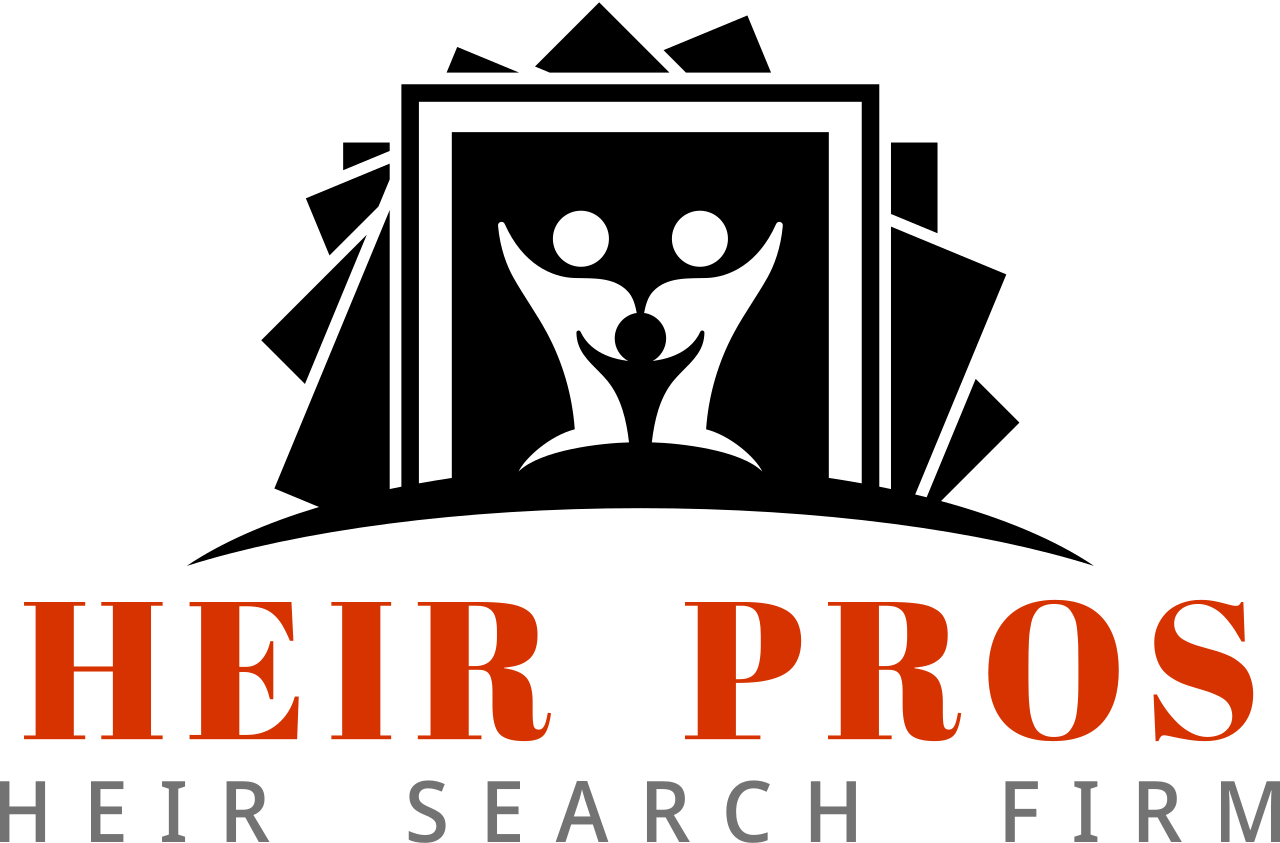Summary
To identify heirs for a person who died in Maryland, start by searching recent records (1940s–present) for close relatives like spouse, children, or parents, then extend to siblings or more distant relatives (potentially 1870s–present) if no closer heirs are found. Maryland’s intestate succession laws prioritize immediate family, but you may need to trace multiple generations using vital records, census data, or probate records to locate all potential heirs. For complex cases or unknown heirs, consider hiring a genealogist or probate attorney to ensure a thorough search and compliance with legal requirements.
In Maryland, identifying heirs for a deceased person’s estate, particularly in cases of intestacy (where there is no valid will), involves tracing the decedent’s family tree to determine who is entitled to inherit under Maryland’s intestate succession laws. The time period you need to search depends on the specific circumstances of the estate, the family structure, and the applicable laws. Below is a detailed guide to help you understand how far back you may need to search to identify heirs.
Key Considerations for Heir Search in Maryland
1. Maryland Intestate Succession Laws
Maryland’s intestate succession laws govern who inherits when someone dies without a will. The hierarchy prioritizes close relatives, starting with:
- Surviving spouse and minor children: Spouse receives half, and minor children share the other half. If no minor children but there are adult children, the spouse gets the first $15,000 plus half the residue, with children sharing the rest.
- Surviving spouse and no children: Spouse inherits everything.
- No spouse but children: Children (or their descendants) inherit in equal shares.
- No spouse or children but parents: Parents inherit equally or the surviving parent takes all.
- No spouse, children, or parents: Siblings or their descendants inherit.
- More distant relatives: If no closer relatives exist, the search extends to grandparents, aunts, uncles, cousins, etc.
- No known heirs: If no heirs are found, the estate may escheat to the state (Maryland Department of Health or county board of education) after a period of years.
Heirs must survive the decedent by at least 30 days to inherit.
2. How Far Back to Search
The extent of the search depends on the closest living relatives at the time of death. You generally start with the most recent generations (spouse, children, parents) and work backward through the family tree until you identify living heirs.
- Immediate family (spouse, children, parents): You typically need to confirm the existence and status of these relatives, which may require searching records from the decedent’s lifetime and slightly before (e.g., birth, marriage, and death records for the past 50–100 years, depending on the decedent’s age).
- Siblings and their descendants: If no spouse, children, or parents are alive, you’ll need to trace siblings and their descendants, which may extend back 50–80 years or more, depending on the decedent’s age and family size.
- Extended family (grandparents, aunts, uncles, cousins): If no closer relatives are found, you may need to search further back, potentially 100–150 years or more, to trace grandparents’ lines and identify descendants of aunts, uncles, or cousins. This could involve genealogical research into the 19th or early 20th century, depending on the family structure.
- Unknown or missing heirs: If heirs are unknown or cannot be located, you may need to conduct a “due diligence” search, which could involve examining records from multiple generations (potentially back to the 1800s) to establish the absence of heirs or to locate distant relatives.
3. Time Period for Specific Records
Vital Records: Maryland began statewide vital records registration in 1898 for births and deaths, and 1910 for marriages, though some counties have earlier records. To identify heirs, you may need to search:
- Birth records: To confirm children or siblings (potentially 1920s–present, depending on the decedent’s age).
- Marriage records: To verify spouses or stepchildren (potentially 1940s–present).
- Death records: To confirm which relatives predeceased the decedent (potentially 1900s–present).
Census Records: Federal censuses (available 1790–1950, with 1960 expected in 2032) can help trace family members across generations, especially for extended relatives like aunts, uncles, or cousins.
Probate and Land Records: If the decedent’s parents or grandparents left estates, probate records (available from the 1600s in some counties) or land records can identify family members. These may require searching back to the 1800s or earlier for distant heirs.
Other Records: Military records, immigration records, or genealogical databases may be needed for distant relatives, potentially extending back to the 18th or 19th century.
4. Unknown Heirs and Due Diligence
If heirs are unknown or their whereabouts are unclear, Maryland requires the personal representative to conduct a “due diligence” search to locate them. This may include:
- Checking public records (e.g., motor vehicle bureau, voter registration).
- Searching online databases or social media.
- Publishing a “Notice to Unknown Heirs” in a local newspaper (required to be published once a week for three weeks).
If no heirs are found after a diligent search, the estate may escheat to the state, but this typically requires proving no heirs exist, which could involve extensive genealogical research (potentially 100–200 years back).
5. Practical Timeframe for Search
- For most estates, searching back 50–100 years (e.g., 1920s–present) is sufficient to identify immediate family (spouse, children, parents, siblings).
- For complex cases with no close relatives, you may need to extend the search to 150 years or more (e.g., 1870s–present) to trace cousins or other distant relatives.
- The exact timeframe depends on the decedent’s age, family size, and whether any relatives are known to be estranged or unknown. For example, if the decedent was 80 years old at death in 2025, you might start with records from the 1940s (birth of children) and extend back to the 1900s or earlier for parents or grandparents.
6. Special Cases
- Estranged or Unknown Heirs: If the decedent had estranged family members or potential unknown heirs (e.g., children born out of wedlock), you may need to search more recent records (1940s–present) and consult with family members or use private investigators.
- Complex Estates: Large or complex estates may require professional genealogical research or hiring a private investigator to trace heirs across multiple generations or jurisdictions.
- Escheatment: If no heirs are found after a thorough search, Maryland law allows the estate to be held by the state for a period (typically three years) before it escheats. This requires documenting the search efforts, which may span multiple generations.
Practical Steps for Conducting the Heir Search
- Start with Known Information: Gather the decedent’s birth, marriage, and death records, as well as any known family details (e.g., names of spouse, children, parents).
- Build a Family Tree: Use vital records, census data, and genealogical databases to trace the decedent’s lineage, starting with the closest relatives and moving outward.
- Check Probate Records: File a Petition for Probate with the Register of Wills in the county where the decedent was domiciled to access any existing estate records.
- Publish Notices: Ensure the “Notice of Appointment, Notice to Creditors, Notice to Unknown Heirs” is published in a local newspaper and mailed to known creditors and heirs. This must be done within 20 days of the personal representative’s appointment.
- Use Professional Services: For complex cases, consider hiring a genealogist or private investigator to access specialized databases or conduct international searches.
- Document Due Diligence: Keep detailed records of all search efforts (e.g., databases checked, notices published) to satisfy the court if no heirs are found.
Legal Time Limits
- No Time Limit to Open an Estate: There is no statutory deadline to open an estate in Maryland, but once opened, specific deadlines apply (e.g., filing an inventory within 3 months, accounting within 9 months).
- Notice to Heirs: The List of Interested Persons (including heirs) must be filed within 20 days of the personal representative’s appointment.
- Creditor Claims Period: Creditors have 6 months from the date of death or 2 months from receiving notice to file claims, which may affect the timeline for identifying and notifying heirs.
Recommendations
- Start with Recent Records: Begin with records from the decedent’s lifetime (e.g., 1940s–present) to identify spouse, children, or parents. Expand to earlier records (1900s or before) if no close relatives are found.
- Consult an Attorney: Given the complexity of Maryland’s intestate succession laws and the potential for disputes, consult a Maryland probate attorney to ensure compliance with legal requirements.
- Use Genealogical Tools: Leverage resources like genealogical databases or Maryland’s vital records to trace family lines.
- Hire Professionals if Needed: For unknown or distant heirs, professional genealogists or private investigators can streamline the process, especially for large or complex estates.
Related Resources
For more detailed information, you can explore our page on [Heir Search Services](https://www.heirpros.com/heir-search-services), which outlines the steps for locating missing heirs and ensuring proper distribution of estates.
Understanding the probate process, especially concerning posthumous children, can help facilitate smoother resolutions and protect the rights of all heirs involved. Legal professionals should stay informed and proactive to best serve their clientele in these sensitive matters.




